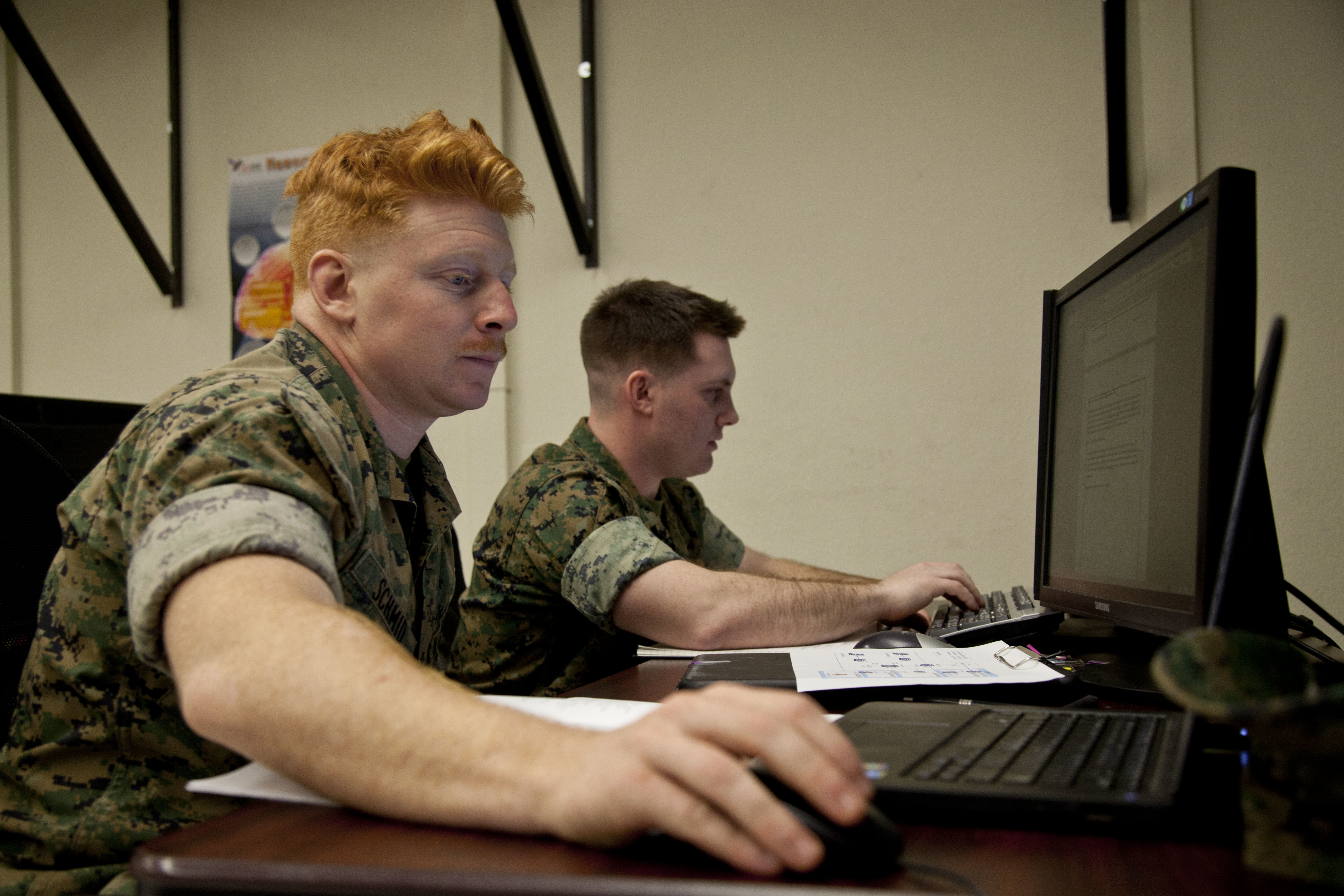
NATIONAL HARBOR, Md. — Marines are studying putting teams of cyber Marines alongside infantry, logisticians and aviators on amphibious ships at sea.
The work by Marine Corps Forces Cyberspace Command will evaluate the best way to include defensive cyber operations (DCO) detachments on an amphibious warship to deploy with Marine Expeditionary Units, MARFORCYBER commander Maj. Gen. Loretta Reynolds said on Tuesday.
“I have Marines aboard a MEU right now trying to figure out what does a DCO capability look like from an expeditionary standpoint,” she said.
“What does that toolkit look like? How do we think about sharing information? Sharing data?”
Growing from the Marine Corp’s communications community, DCO forces work to keep Marine computer networks up and free of cyber intrusion and attack. The services recently approved a cyberspace military occupational specialty (MOS) and are starting to populate them in the communication battalions that are part of the Marine Expeditionary Forces.
“We’ve stood up in each MEF, MEF information groups. [There’s] an O-6 level commander whose job it is to pull this together and intergrade it for the MEF commander and to provide detachments into MAGTFs (Marine Air/Ground Task Forces) to think about all of these folks together. That’s all happening this year,” Reynolds said.
“With the companies that we’re building this year, there will be sufficient capacity for major subordinate commands in the MEF to have some DCO.”
As part of the Marine Corps planned growth, commandant Gen. Robert Neller has called for about 3,000 more Marines that will focus on Information operations, intelligence analysis, targeting, electronic warfare and cyber.
While the bulk of the military’s work in cyberspace is designed to keep major enterprise networks operating and secure, in this test the Marines are looking how to make cyber a more tactical asset.
“It’s a case in point on how we bring cyber into the Marine Air Ground Task Force — and the MEU being our smallest standing MAGTF, how do we think about putting that capability into a MEU that can be a responsive force in readiness in the cyber domain?” Reynolds said.
In the realm of offensive cyber, downrange Marine leaders are learning how the capability fits in with infantry, armor and aviation of the traditional MAGTF. While DCO Marines come from the communications world, offensive cyber operators are grown from the signals intelligence communities.
“The same way we have a command in aviation to teach about close-air support and other capabilities, we want a command that’s taking what the joint force is learning, thinking about the employment of those fires in the MAGTF and then pushing those down,” she said.
“In most cases, what we need to teach them is when and where you need to plan for the integration of non-kinetic effects. We’ve been doing non-kinetics for a long time, but from the cyber perspective, there’s a couple of extra steps from a targeting progress and teaching them what’s available to them right now.”





